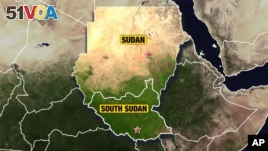July 17,2014
Long before the development of agriculture, our prehistoric ancestors had a good knowledge of plants – not just for food, but for medicine. Researchers found evidence of this by studying some ancient teeth found in Central Sudan.
Dental hygiene has become an important part of modern-day health care. And many millions of dollars are spent every year to get or keep teeth and gums healthy. One of the things dentists warn their patients about is dental calculus or tarter – a very hard form of plaque that forms around teeth. It may take a lot of scraping or the use of ultrasonic tools to remove it.That type of plaque has given researchers an insight into people who lived thousands of years ago along the White Nile at Al Khiday. It’s about 25 kilometers south of Omdurman.
Karen Hardy is the lead author of a study published in PLOS ONE. She and her colleagues went to the site to analyze the compounds clinging to the ancient teeth.
“We were approached by the excavators of the Sudanese site. We were very interested in working at this site because it has a long sequence and it’s also in a relatively hot area. And we wanted to whether the chemical compounds survived right through the sequence. And, in fact, in this hot place, we discovered that they survived very well, indeed.”
Hardy is a research professor at the Catalan Institution for Research and Advanced Studies at the Autonomous University of Barcelona.
She said, “It’s a little bit like when you go out into an archeological site. Until you start looking you don’t really know what you’re going to find. We were hoping for evidence of ancient diet, particularly evidence of the use of plants in ancient diets before agriculture developed. That’s something that is very difficult to get hold of. It’s very difficult to find.”
But they did find it and the tartar told a tale. The people of Al Khiday were well aware of the use of plants thousands of years before agriculture arrived on the scene in 45

Al Khiday is located in Central Sudan. Archeologists say the site was populated for many thousands of years.

Al Khiday is located in Central Sudan. Archeologists say the site was populated for many thousands of years.
“We found evidence of plants. We could see the physical evidence in the form of the microfossils on microscope slides. And we also got chemical compounds that pointed in this case specifically to this plant purple nut sedge right through the sequence. In ancient Egypt, it was used as a component of perfume. It was used in water purification. And it also has a lot of medicinal uses that have been recorded by the ancient Greeks and the ancient Egyptians,” said Hardy.
It’s believed purple nut sedge may have the ability to inhibit the growth of Streptococcus mutans. It’s bacteria that help cause tooth decay. And its effectiveness appears to be borne out in many ancient teeth which showed few cavities.
However, purple nut sedge is not so popular today. In fact, Hardy said it’s now considered a “scourge” in tropical and sub-tropical regions. It’s been called the “world’s most expensive weed” because it’s so invasive and costs so much to eradicate once it invades agricultural fields.
Nevertheless, Hardy said the discovery of its widespread use in ancient Central Sudan tells a lot about the population.
“It’s very clear that they were very well integrated into their environment -- that they understood their environments very well -- that they knew how to exploit the things that were available in their environment. I think that we probably grossly underestimated their abilities actually.”
The findings also shed light on their pre-historic diet and dispel some misconceptions.
Hardy said, “Up to the present, the evidence has not been there for plants. There has been a strong focus on the use of meat, meat products, simply because that is what is found. It’s found in evidence for animal bones spread across sites -- strong evidence of protein. And there simply has not been the evidence there for the plants. Now hopefully with this kind of study that we’re doing we’re going to be able to start getting closer to identifying some of the plant based things that people ate. Because, of course, they really had to eat plants. You can’t survive on protein alone.”
Professor Hardy and her colleagues are now working on many different archeological sites with varying time periods. She said that they may discover the use of other plants by ancient people long since forgotten.